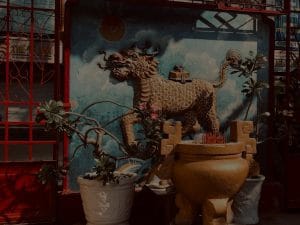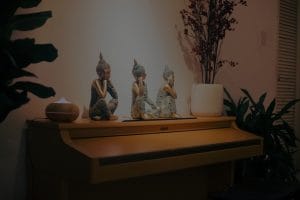**Abstract:**
Transform your meditation experience with essential feng shui ornaments designed to enhance focus and tranquility. Discover how these elements can elevate your space and deepen your practice.
Creating a Sacred Space for Meditation
Meditation is more than just a practice; it’s a journey into oneself. A well-designed meditation space can significantly enhance this experience. Feng shui, an ancient Chinese philosophy, emphasizes the importance of harmony and balance within our environments. By incorporating feng shui ornaments, you can cultivate an atmosphere that promotes calmness and concentration. Elements such as crystals, incense holders, and calming imagery serve not only as decorative pieces but also as tools that support your meditation goals.
The Power of Crystals in Meditation
Crystals are powerful feng shui ornaments that resonate with specific energies, enhancing focus and spiritual clarity. For instance, amethyst is known for its calming properties, making it ideal for meditation spaces. Placing an amethyst cluster on your altar can help clear your mind and promote a peaceful environment. Similarly, clear quartz amplifies energy and intention, making it a versatile addition. When selecting crystals, consider your personal energy needs and how each stone can support your meditation practice.
Symbolic Statues and Their Impact
Incorporating symbolic statues can deepen your meditation practice by serving as visual reminders of your intentions. Statues of Buddha, for example, embody peace and mindfulness. Placing a Buddha statue in your meditation area can inspire a sense of tranquility and connection to your practice. Other symbols, such as the lotus flower, represent spiritual awakening and purity. These ornaments not only beautify your space but also serve as focal points that can guide your meditation sessions.
The Role of Natural Elements
Bringing nature into your meditation space can significantly enhance your overall experience. Elements like bamboo, water fountains, and plants create a serene atmosphere that fosters relaxation. Bamboo, known for its flexibility and strength, symbolizes resilience and growth. A small water fountain can introduce the soothing sound of flowing water, which promotes a calming effect. Incorporating plants not only purifies the air but also connects you with the natural world, grounding your meditation practice.
Utilizing Color Psychology in Your Space
Color plays a crucial role in setting the mood for meditation. In feng shui, each color has its unique energy and influence. Soft blues and greens promote tranquility, while warm yellows can inspire creativity. Consider painting your meditation space in calming hues or adding colorful cushions and throws that resonate with your emotional needs. The right colors can create a harmonious environment that enhances your focus and overall meditation experience.
Incorporating Sound for Deeper Focus
Sound is a vital aspect of meditation, and feng shui encourages the use of auditory elements to enrich your practice. Incorporating singing bowls or chimes can create soothing sounds that help you enter a meditative state. The vibrations from these instruments resonate with your energy, facilitating deeper relaxation. Additionally, consider using nature sounds or gentle music to enhance your meditation sessions. This auditory backdrop can help block out distractions, allowing for a more profound focus.
Final Thoughts: Personalizing Your Meditation Space
Ultimately, your meditation space should reflect your unique energy and intentions. Experiment with different feng shui ornaments to find what resonates with you. Remember that the goal is to create a sanctuary that promotes peace and focus. As you curate your space, allow your intuition to guide you. The right combination of elements will not only enhance your meditation practice but also create a lasting sense of harmony and well-being in your life.










